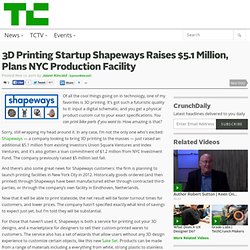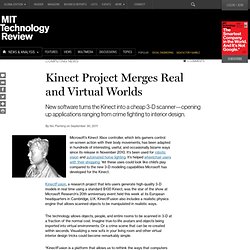

Happy Thanksgiving — a digitally fabricated feast. 3D printed turkey and more! Since we eat the same meal every Thanksgiving, I figured why not post the same Thanksgiving story from last year. Enjoy your 3D printed turkey and lasercut Apple apple pie! Snacks While you’re waiting, have a coincidentally Jewish themed snack: portrait matzo from Matzography (via Printersting ) or a lasercut banana from Wouter Walmink (via Craft ). Appetizers I’m starting this Thanksgiving dinner off fancy: a duck consomme with a lasercut nori (seaweed) garnish from Seattle Food Geek (via Craft Gossip ). The full meal is after the jump. Main Course Meat is on the menu. You can either have laser-etched ham by Studio Luddens (via Replicator ), laser-etched beef jerky by MeatCards.com (via Printeresting ), or some 3D printed turkey fresh out the Fab@Home from Cornell Computational Synthesis Lab (via Fabbaloo ).
Enjoy with several pieces of laser-etched toast from Geoff McFetridge (via The Fox is Black ). Coffee & Dessert Not a chocolat person? Well, I’m stuffed. Digital Manufacturing Report: 3D Printing and RepRap On the March. At England’s University of Bath Digital Manufacturing Lab, they love their RepRaps, which may be multiplying like lemmings.

That madcap bunch of 3D printer aficionados at the University of Bath, England is at it again. Now they have opened the Digital Manufacturing Lab to showcase the capabilities of RepRap, the 3D printer that can reproduce itself. RepRap (Replicating Rapid prototyper) is the brainchild of Dr. Adrian Bowyer. This is a low cost, open source rapid prototyping system that can make a broad array of 3D plastic objects from computer-generated designs.
This isn’t just a hobbyist’s play toy. Edium size. The two latest flavors of the RepRap system on hand at the Digital Manufacturing Lab are the Mendel that can print plastic objects up to 200x200100mm3 at speeds of 15 ml per hour. Said Chris DiBona, the open source and public sector engineering manager at Google, “Think of RepRap as a China on your desktop.” 3D Printing Startup Shapeways Raises $5.1 Million, Plans NYC Production Facility. Of all the cool things going on in technology, one of my favorites is 3D printing.

It’s got such a futuristic quality to it: input a digital schematic, and you get a physical product custom cut to your exact specifications. You can print bike parts if you want to. How amazing is that? Sorry, still wrapping my head around it. In any case, I’m not the only one who’s excited: Shapeways — a company looking to bring 3D printing to the masses — just raised an additional $5.1 million from existing investors Union Square Ventures and Index Ventures, and it’s also gotten a loan commitment of $1.2 million from NYC Investment Fund. And there’s also some great news for Shapeways customers: the firm is planning to launch printing facilities in New York City in 2012. Now that it will be able to print stateside, the net result will be faster turnout times for customers, and lower prices.
Kinect Project Merges Real and Virtual Worlds. Microsoft’s Kinect Xbox controller, which lets gamers control on-screen action with their body movements, has been adapted in hundreds of interesting, useful, and occasionally bizarre ways since its release in November 2010.

It’s been used for robotic vision and automated home lighting. It’s helped wheelchair users with their shopping. Yet these uses could look like child’s play compared to the new 3-D modeling capabilities Microsoft has developed for the Kinect. KinectFusion, a research project that lets users generate high-quality 3-D models in real time using a standard $100 Kinect, was the star of the show at Microsoft Research’s 20th anniversary event held this week at its European headquarters in Cambridge, U.K. KinectFusion also includes a realistic physics engine that allows scanned objects to be manipulated in realistic ways. The technology allows objects, people, and entire rooms to be scanned in 3-D at a fraction of the normal cost.